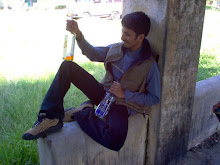
Ooty also known as Udhagamandalam is the "Queen of hill stations" and the capital of Nilgiris district. It is one of the most popular tourist resorts in India. Nilgiris means "Blue Mountains". Bordering the Karnataka and Kerala states, the Nilgiris or Blue mountains is a veritable fairyland. It has hill stations at various altitudes and is a very popular travel destination. There are cloud-kissing peaks, dense forests, rushing streams, undulating emerald green plains, breath-taking view of sudden drops, valleys and glades. The charming hill station of Ooty, is situated amidst the magnificent Nilgiri mountain ranges. Popularly known as the 'Queen of hill stations' Ooty is one of the favourite summer resort of South India. It is a land of picturesque picnic spots. The best thing about Ooty is that it combines the peace and tranquility of a hill station with the comforts of urban life. The altitudes of Nilgiri mountains varies between 2,280 metres and 2,290 metres. The Doddabetta hill situated at a height of 2,623 metres is the highest peak in Ooty. Other hills are Snowdon, Elk hill and Club hill.
The hill station of Ooty is known for its orchards of peaches and plums, terraced tea plantations, eucalyptus and pine trees. Ooty hills changes its moods in different seasons, but its different moods provide similar hospitality to the tourists. The hill station sprawling along a picturesque plateau, with its green valleys and natural beauty offer a close affair with nature. Besides its pristine charm, Ooty hills offer several adventure options like trekking, hand-gliding and angling etc.
Ooty is famous for its Tea and Tourism festival, which is held in the month of January. In the festival the visitors can know much about the different flavours of their favorite drink tea. Makar Ponagal is another important festival celebrated in the month of January. One can notice a marvellous change in vegetation, as one goes from Kallar to Coonoor. Lofty mountains, dense forest, sprawling grasslands and miles and miles of tea gardens greet the passengers on most routes. The annual Tea and Tourism Festival attracts crowds in huge numbers.
There is no better holiday mountain resort in India than the Nilgiris. It is here the world's widest valley Ketti is found. Many breathtaking wild gardens in the Western Catchment provide trekking and hiking grounds for the nature lovers. Ooty and Udhagamandalam are various names of Ottakkalmandu which means "the village of a single stone". An important point on the Mettupalayam-Ooty route is the pretty town of Coonoor; and on the Mysore-Ooty route, the high landmark is the Mudumalai Wildlife Sanctuary. Botanical Garden : Botanical garden is a major attraction for the tourists who visit Ooty. The Botanical garden has more than 650 plant species, including a 20 million years old fossil tree trunk. The garden houses varied fauna, which consists of six sections comprising varieties of tree species, grass, ferns, multi coloured flowering plants, house ferns and orchids. This garden was laid out in 1847 by the Marquis of Tweedale and is spread over 55 acres. Lush green well maintained lawns, rare tree species (like the cork tree which is probably the only such tree in India, the paper bark tree and the monkey puzzle tree - monkeys cannot climb this tree), a 20 million year old fossilized tree, an Italian-style garden bordering a clear pool, a vast variety of flowering bushes and plants in myriad hues (exotic and ornamental), fern house with a vast range of ferns and orchids, are some of the many highlights of this garden. A flower show along with an exhibition of rare plant species is held every year in the month of May at this garden.
| ||
| ||
Published In Arrow magazine. December 2007 Issue. For more: http://www.aagneyam.com/arrow |

